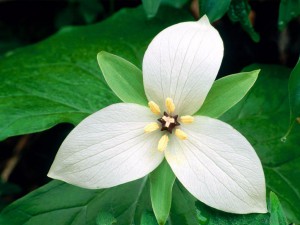 The Ontario Trillium Foundation is rejigging its programs. Below is a summary of how we see things shaping up and our (highly subjective) thoughts about what they are looking for.
The Ontario Trillium Foundation is rejigging its programs. Below is a summary of how we see things shaping up and our (highly subjective) thoughts about what they are looking for.
The focus for all public funders today is economic development, i.e. job creation and stimulus, especially directed towards youth, seniors and constituencies facing acute political, social, physical or economic challenges.
All funders also want to see impacts beyond the money spent by the grant, whether in the form of projects becoming self-sustaining or by producing measurable economic benefits that advance self-reliance in the targeted constituency.
If you don’t know anything about impact measurement, it’s time to learn what GIIRS, GRI, IRIS and SROI stand for.
To approach Trillium for funding, here are the basic steps:
- find the right funding category – there are three now, SEED, GROW and CAPITAL;
- make sure your project is targeting at least one of Trillium’s desired “priority outcomes;”
- find the program area that fits what you do – there are six: Active People, Connected People, Green People, Inspired People, Promising Young People and Prosperous People – all interesting terminology for what, back in the day, they would have simply called Sports, Seniors, Environment, Arts, Youth, and Employment
- ensure your project is doing the kind of work Trillium will support (they are being very specific) and that it will produce measurable impact; you will want to be counting, counting, counting not just the number of people engaged and dollars spent/earned, but the number of job placements, clubs and leadership positions created, square feet of building, facilities, etc.
Funding levels can be expected to be somewhat lower than before considering both Kathleen Wynne’s continued cuts to the Trillium budget (amounting to $20m over the past 4 years; 2012-13 budget was approximately $125m), and the fact that demand is always rising.
There are three grant streams: Seed, Grow and Capital.
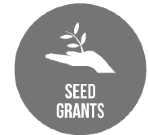 SEED grants are for early-stage development projects:
SEED grants are for early-stage development projects:
Activities funded include:
- Conducting new research or feasibility studies
- Testing new approaches
- Hosting discussions about emerging issues or new opportunities
- Developing a new idea
- Launching a new event
- Convening people together
AMOUNT: From $5,000 to $75,000
TERM: Up to 1 year
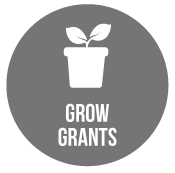 GROW grants are for more substantial projects:
GROW grants are for more substantial projects:
Activities funded include:
- Replicating, adapting or scaling a proven model
- Piloting or demonstrating a tested model
AMOUNT: From $50,000 to $250,000 per year
TERM: 2 to 3 years
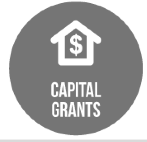 CAPITAL grants are for buildings: improving access, or energy efficiency, renovating, repairing or building new.
CAPITAL grants are for buildings: improving access, or energy efficiency, renovating, repairing or building new.
Activities funded include:
- Buying and installing equipment
- Doing renovations, installations and repairs
- Building structures or spaces
- Making better use of technological resources
AMOUNT: From $5,000 to $150,000
TERM: Up to 1 year
TYPES OF PROJECTS
Trillium funding is targeted. They know the types of projects they want to support and the impacts those projects should produce.
Let’s look at just three of the six funding streams.
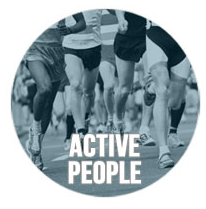 The Trillium category ACTIVE PEOPLE is for sport/play projects. In terms of impact, they are looking for:
The Trillium category ACTIVE PEOPLE is for sport/play projects. In terms of impact, they are looking for:
– high quality and inclusive programs
– engaging more people
More specifically, they are seeking projects that will:
– produce qualified or certified trainers and coaches
– be deeply inclusive: the key words here are “fairness” and “age and ability appropriate”
– create infrastructure for unstructured and structured play/sports: an interesting word here is “unstructured” – they are looking for things that increase physical activity but not necessarily conventional sports.
If you have a project that is going to:
- produce new coaches/trainers
- in a new kind of structured or unstructured sports/play activity
- that is reaching into a community with sports/play deficits
then this is the category for you.
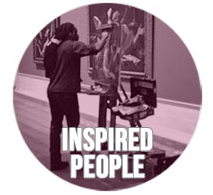 The Trillium category INSPIRED PEOPLE is for arts projects. In terms of impact, they are looking for:
The Trillium category INSPIRED PEOPLE is for arts projects. In terms of impact, they are looking for:
– new and improved facilities
– transferring knowledge from older to younger generations
– arts-based learning and compelling cultural experiences, which both translate into not simply increased visitors or audience but a level of active participation.
So, for example, if you have a project that is going to:
- add to or rejuvinate or build a new facility
- with programs that are committed to using art as a tool for learning not just about art, and
- that uses art and artifacts in an active, not passive way
then this is the category for you.
Check out the metrics Trillium envisions you producing in the Inspired People stream.
The last category we’ll look at here is one that is close to our hearts.
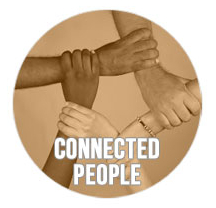 The Trillium category CONNECTED PEOPLE is for programs to overcome social isolation and alienation. In terms of impact, Trillium is looking for:
The Trillium category CONNECTED PEOPLE is for programs to overcome social isolation and alienation. In terms of impact, Trillium is looking for:
– giving people a say in developing meaningful programs;
– cultivating leadership and taking leadership roles in the community
– bringing diverse communities together to share services, work on common goals;
– creating places and programs where people gather.
So, for example, if you have a project that is going to:
- bring together people who are isolated
- to create their own programs and take on leadership roles
- that also crosses the race, class, ethnicity, economic and other boundaries that keep people apart
then this is the category for you.
Read Trillium’s backgrounders on the Connected People program and expected impacts to get the full picture. Below is an example of the metrics (measurements) they are looking for in this stream.

Finally, NEW to the Trillium process is the preliminary self-assessment tool. That can be intimidating but it is only a tool. If you have a project in mind, it is always a good idea to call Trillium first and talk to one of their friendly and helpful officers. If you would like help planning a project and preparing an application, please give us a call 647 929 0466 or email info@socialenterpriseadvocates.ca.